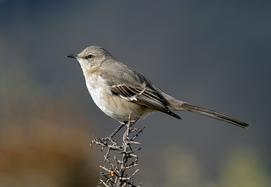NORTHERN MOCKINGBIRD KS-186
Lake Scott State Park, Scott City, Kansas
June 7, 5:28 a.m.
Sunrise at 6:19 a.m.
Clearly not all northern mockingbirds are equal in their ability (or willingness) to mimic; this bird is a marvel, his immediate neighbor not so much.
I hear clear mimicry (a few examples listed here):
Western kingbird (same call at 0:07 and 6:48)
Magpie (same call at 0:13 and 7:07)
House sparrow (same call at 2:19, 8:47)
Red-bellied woodpecker (same kwirr call at 5:25, 9:30)
Northern cardinals (1:49, 3:35, 7:02, 8:39)
American robin (0:37)
Bell's vireo (0:45)
Great crested flycatcher (4:53)
Killdeer (7:05).
Is that a northern flicker wik-wik-wik song at 2:56? Maybe not quite.
The WHITE! of the BOB-WHITE! call of the northern bobwhite at 5:37-5:42? I think so.
Someone who really knows western birds will hear a lot more mimicry here than I do.
And how this mockingbird loves rock wrens! Mockingbirds from Missouri east seem to love Carolina wrens, because each wren has so many different songs and their style of repetition within a song fits well with the natural tendencies of the mockingbird. It's the same with the rock wren, given how this wren also repeats a particular phrase several times in each song. So I listen to the seven song bursts from 0:18 to 0:35 and I hear a rock wren running through some of his hundred or so different songs; much of the section from 4:01 to 4:52 also sounds like rock wren to me, and 7:10 to 7:26, and 9:02 to 9:24, as well as isolated songs here and there (e.g., at 1:01, 6:01).
Yes, this northern mockingbird is a marvel, which leads me to wonder why his neighbor sings such a different tune with so little mimicry. Perhaps there's an age difference, with the older bird doing more mimicry? I'd love to know.
Background
Great horned owl, American robin, common nighthawk, Canada goose, wild turkey

Photo by John Van de Graaff
